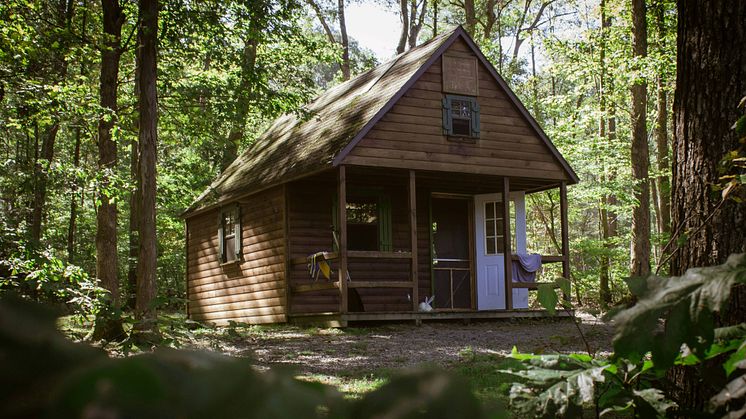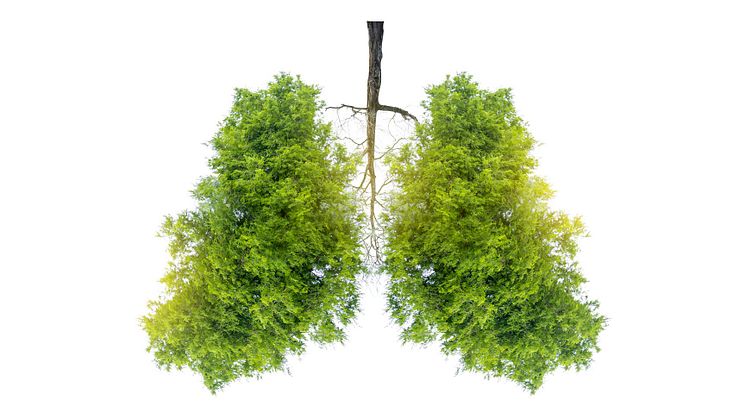
Blog post -
Why You Should Pay Attention to Radon – Even in Holiday Homes
Every summer, millions of holiday homes across Europe open their doors for the season. It’s estimated that there are between 30 and 40 million such properties in use. For many, these homes represent relaxation, nature, and quality of life. But they can also come with hidden health risks, like radon.
Radon is a naturally occurring radioactive gas that is invisible and odorless. It forms in the ground and can seep into buildings, accumulating in indoor air. Long-term exposure increases the risk of serious health issues, most notably lung cancer. In fact, radon is the second leading cause of lung cancer after smoking. It’s estimated to cause between 3% and 14% of all lung cancer cases, depending on a country’s average radon levels and smoking prevalence.
Despite these facts, many people still neglect to test their holiday homes for radon. A common misconception is that short stays reduce the risk. However, health risks are determined by total exposure over time, across homes, workplaces, and vacation properties. In some cases, holiday homes may be more vulnerable.
Simpler Buildings, Higher Risk
Holiday homes are often built with simpler construction methods than permanent residences. They may lack proper insulation and have limited ventilation. Additionally, many are located in areas with high natural radon levels in the ground.
Radon levels are measured in becquerels per cubic meter of air (Bq/m³). According to the World Health Organization (WHO), even levels as low as 100 Bq/m³ carry an increased risk of lung cancer.
When Should You Test for Radon?
Testing your holiday home for radon is particularly important if any of the following apply:
-
You use the home during the colder months. Heating and reduced ventilation in winter often lead to higher radon concentrations.
-
You plan to sell the property or convert it into a permanent residence. In both cases, a radon test may be required or strongly recommended.
- You’ve made renovations or structural changes. Even if a previous measurement was done, any changes could impact radon levels and warrant a new test.
If you only stay in an uninsulated holiday home for a few weeks in summer, the risk may be lower. Still, if you want peace of mind, testing is a smart investment.
How to Test for Radon
Radon testing is simple. You order radon detectors, place them in the home according to instructions, and leave them in place for at least two months. Afterwards, the detectors are returned to a lab for analysis.
For the most reliable results and to calculate an annual average, the measurement should be taken during the heating season. That’s when homes are typically heated and sealed, giving a more accurate reflection of radon levels.
To ensure reliable results and proper guidance, always use detectors from an accredited laboratory such as Radonova. These results are trustworthy and can serve as the basis for any necessary mitigation.
If you need to test outside the heating season, it’s possible to carry out a short-term indicative test using radon detectors or a digital device like the SPIRIT radon instrument.
What If the Radon Level Is Too High?
If test results indicate elevated radon levels, action should be taken. In some cases, improving ventilation is enough. In others, more comprehensive solutions may be required—such as sealing the foundation or installing a radon sump system. Consulting radon professionals can help ensure the right, long-lasting solution.
A Worthwhile Investment
For many people, a holiday home is a sanctuary for rest and recovery. But exposure to a harmful gas undermines that purpose. By testing for radon, and taking action if needed, you reduce the risk of serious health issues and protect the value of your property. It’s a small step toward a safer, healthier stay, whether it’s a weekend getaway or an extended vacation.







